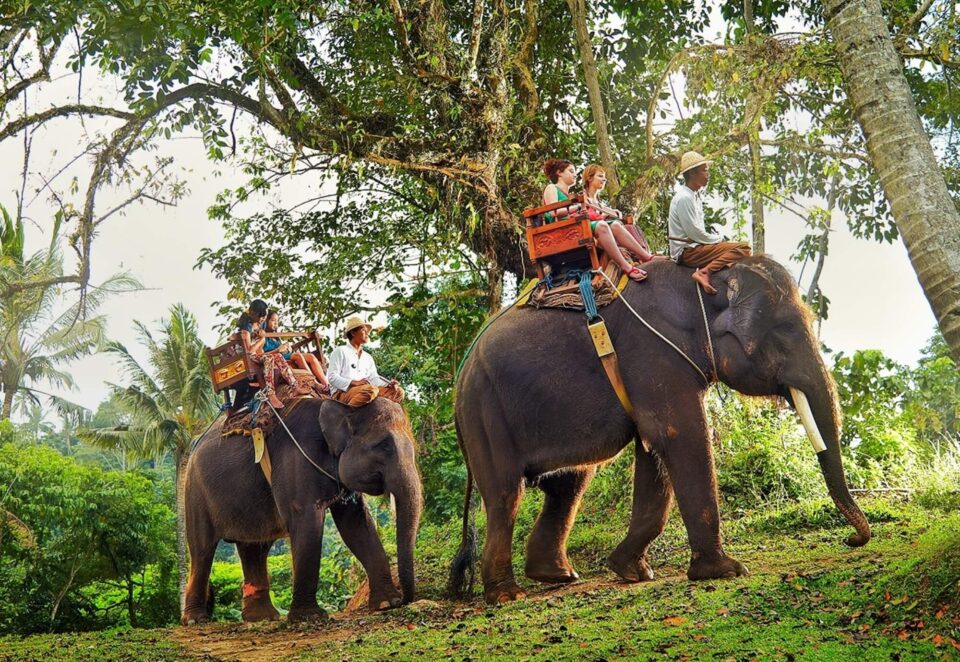Sri Lanka impresses visiting Europeans with its magnificent pristine nature. You will not see anywhere such a golden coast of the majestic Indian Ocean. Evergreen forests cover the mountainsides. The entire island is permeated by streams flowing to mountain rivers. But most of all, Sri Lankans are proud of their national parks, the highlight of which is the unique Yala Park, Sri Lanka. It is open to the public at all seasons of the year and continues to surprise even seasoned travelers.
The first protected area appeared a long time ago-during the reign of King Devanampiyatissa (III century BC). The territory was declared inviolable, and, according to Buddhist philosophy, it was forbidden to harm any living creature.
Today, tourists can visit 12 national parks, three nature reserves and 51 reservations. In general, this territory covers 14% of the island. The most famous parks are Yala, Sinharaja Rain Forest, Udawalawe, Minneriya, etc.
Sri Lanka’s national parks are protected by the Department of Wildlife and Conservation. Visiting guests of the country must follow certain rules of conduct, which the guide will introduce. It will tell you about your movement, routes, stops in the park, and so on. By following these rules, you will have a great time and avoid unpleasant moments during a walk in the park.
Yala Park invites tourists
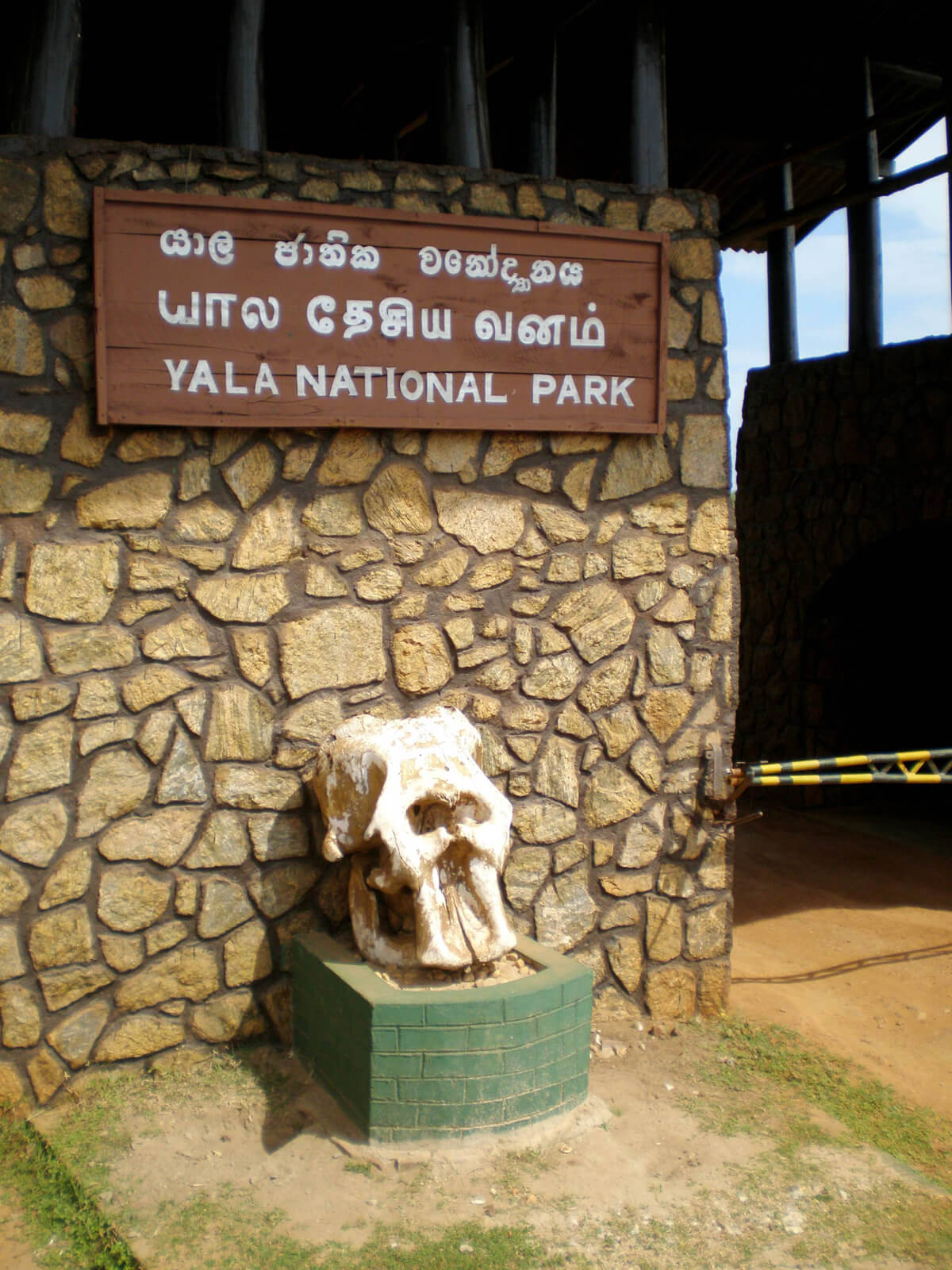
This beautiful nature reserve is spread over an area of 1000 square kilometers, located about 300 km from Colombo. It is divided into two sections. People are allowed to stay in the Western Part, but you can’t visit the Eastern part – only scientists who do their work can visit here.
Flora and fauna
Yala is considered the oldest park on the island, the second largest by area and the most visited in the country. The landscape is a flat, dry savanna overgrown with umbrella trees and low shrubs. In some places, there are small oases around water bodies.
Here, elephants and herbivores walk along the hills, overgrown with bushes and small trees. There are a lot of predators in these places. Yala Park in Sri Lanka is home to 44 species of mammals, including Ceylon elephants and leopards, 46 species of reptiles and 215 species of birds.
Jeep Safari
The most interesting way to get to know the world of animals in Sri Lanka is by going on a safari. The trip takes place in open jeeps, which can accommodate 4-6 people. The safari can be booked for half a day (6:00-11:00 and 15:00-18:00) or for the whole day. However, in the hot afternoon, animals usually hide from the sun, so the most successful time will be morning or evening.
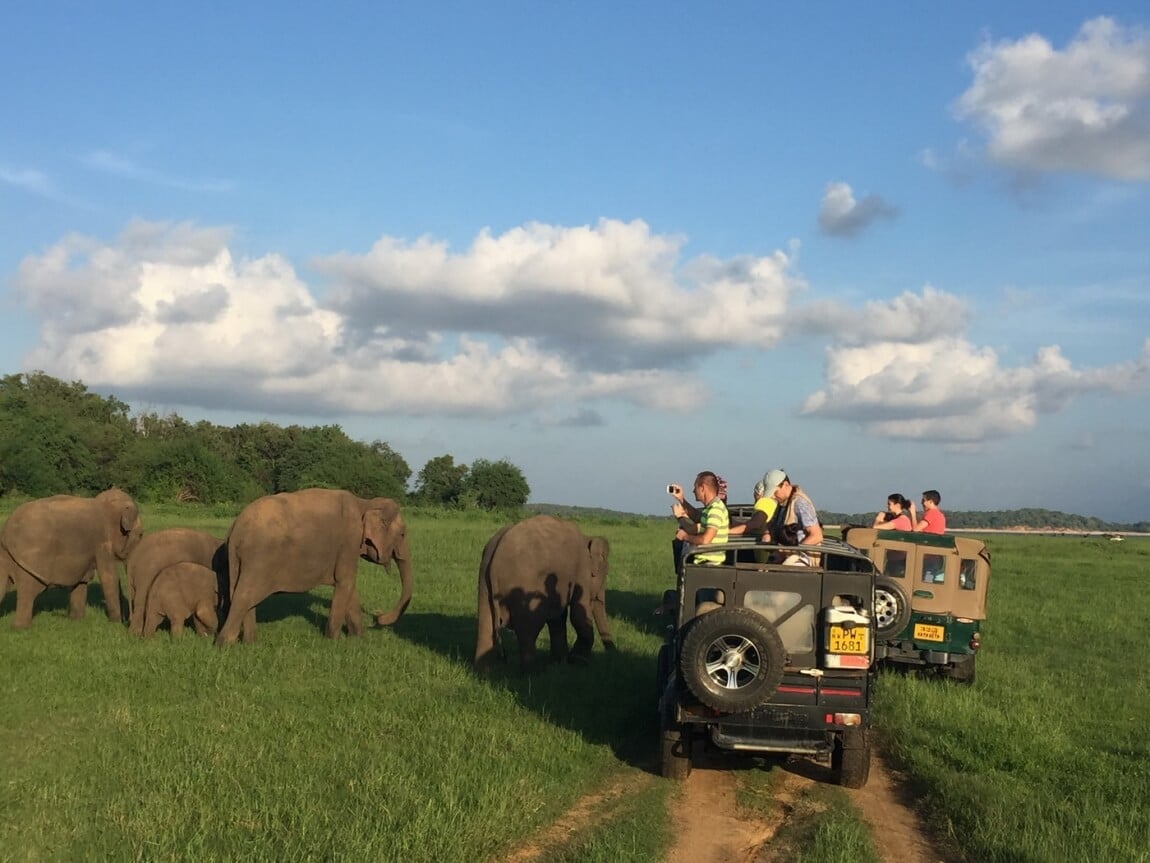
Here you can see in reality a leopard, a buffalo, a crocodile, meet a herd of elephants. In Yala National Park, animals react calmly to tourists and continue to live their normal lives. When the heat subsides, all the inhabitants of the jungle will reach out to the reservoirs – there you can make a lot of unique photos.
Tips for tourists
- A large selection of hotels with air conditioning and high service will allow you to choose inexpensive housing that will cost up to$100.
- Exotic lovers can stay in a campsite and live in bungalows or huts (there are 8 of them in total). Daily accommodation with meals will cost from$ 30 per night.
- Yala National Park in Sri Lanka is open seven days a week from 6: 00 to 18: 00. Once a year, it closes for a month. This happens in September or October.
The cost of a safari in Yala Park depends on the duration, the number of people in the car and your ability to bargain. The standard price for half a day is$ 35, for the whole day – $ 60 per person in a six-seater jeep.
In addition, you must pay for an entrance ticket — $ 15 (+ taxes) for an adult and$ 8 for a child.
Official website of Yala Park: www.yalasrilanka.lk. Here you can book tickets online and get acquainted with the conditions of accommodation and safari (in English).
Sinharaja Rain Forest
Sri Lanka’s Sinharaja rainforest is called a biosphere reserve. The annual precipitation level here reaches 5-7 thousand mm. The park is that rare place on Earth that has not been touched by a human hand. Sri Lankans respect and take care of the virgin nature.
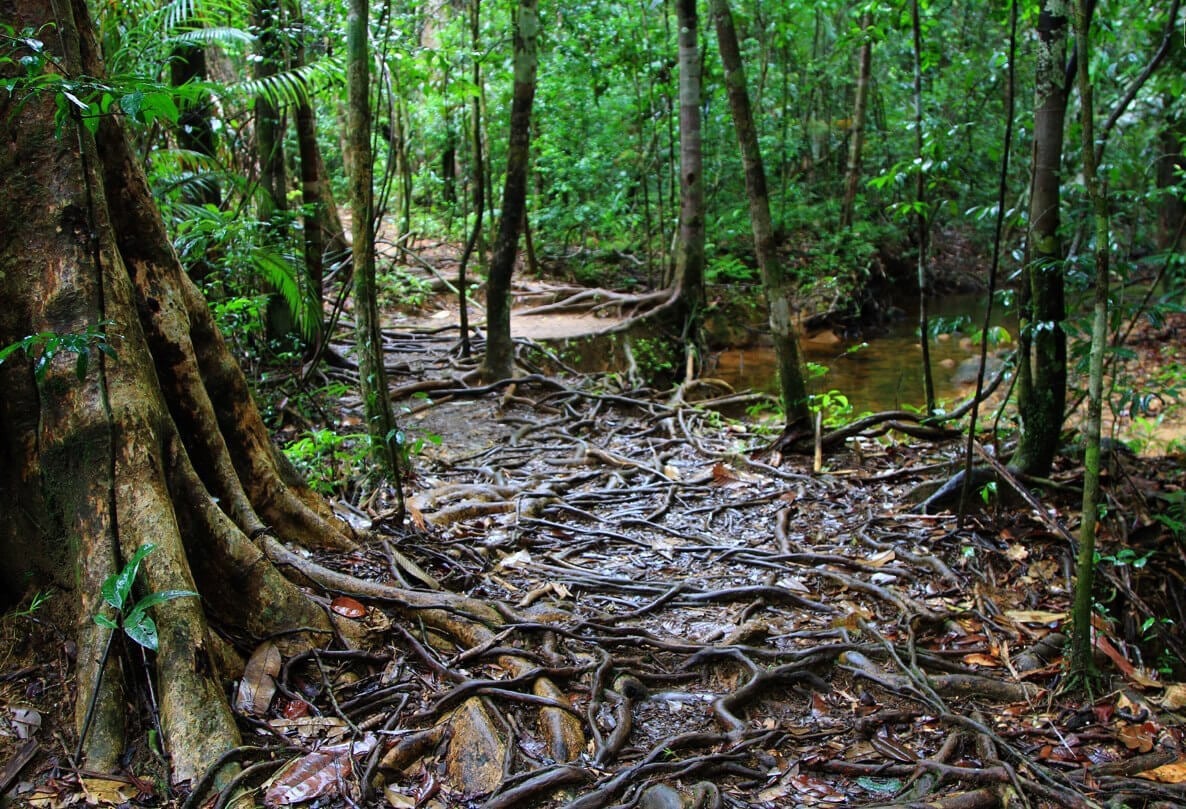
Sinharaja is the oldest forest on the planet
There is a forest in the southern part of the island. Its length is more than 20 kilometers in length and 7 kilometers in width. The vast hilly terrain with ridges and valleys is overgrown with tropical evergreen forest.
Sinharaja translates as “Lion Kingdom”. These places were once the domain of Sinhalese kings. The inaccessible location saved the forest from deforestation. And in 1875, the forest was declared a nature reserve. Now it is of international importance and is on the UNESCO World Heritage List.
Flora and fauna
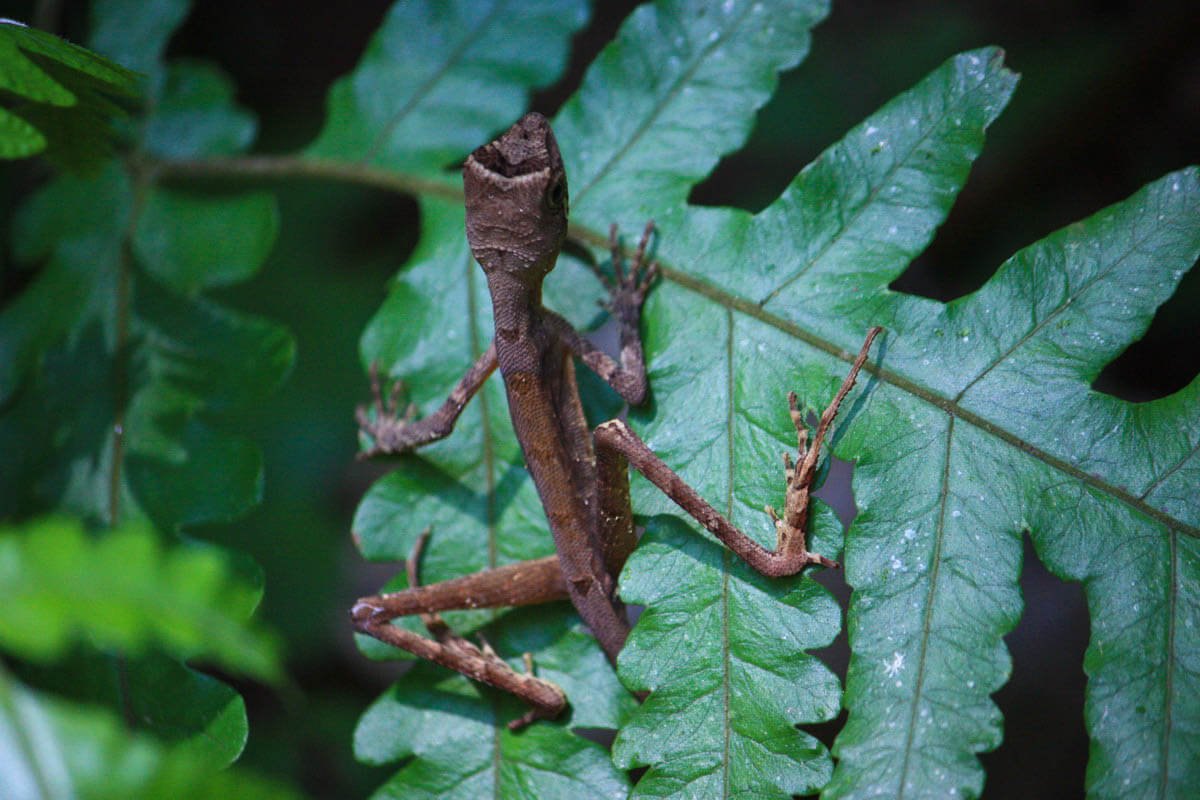
A notable feature of the forest are tall trees with perfectly smooth trunks. The height of individual specimens reaches 50 m. The trees grow very densely, intertwining with vines up to 30 cm thick. The ground is covered with ferns and horsetails. Behind the trees, you can see the majestic peaks of the mountains surrounding the park.
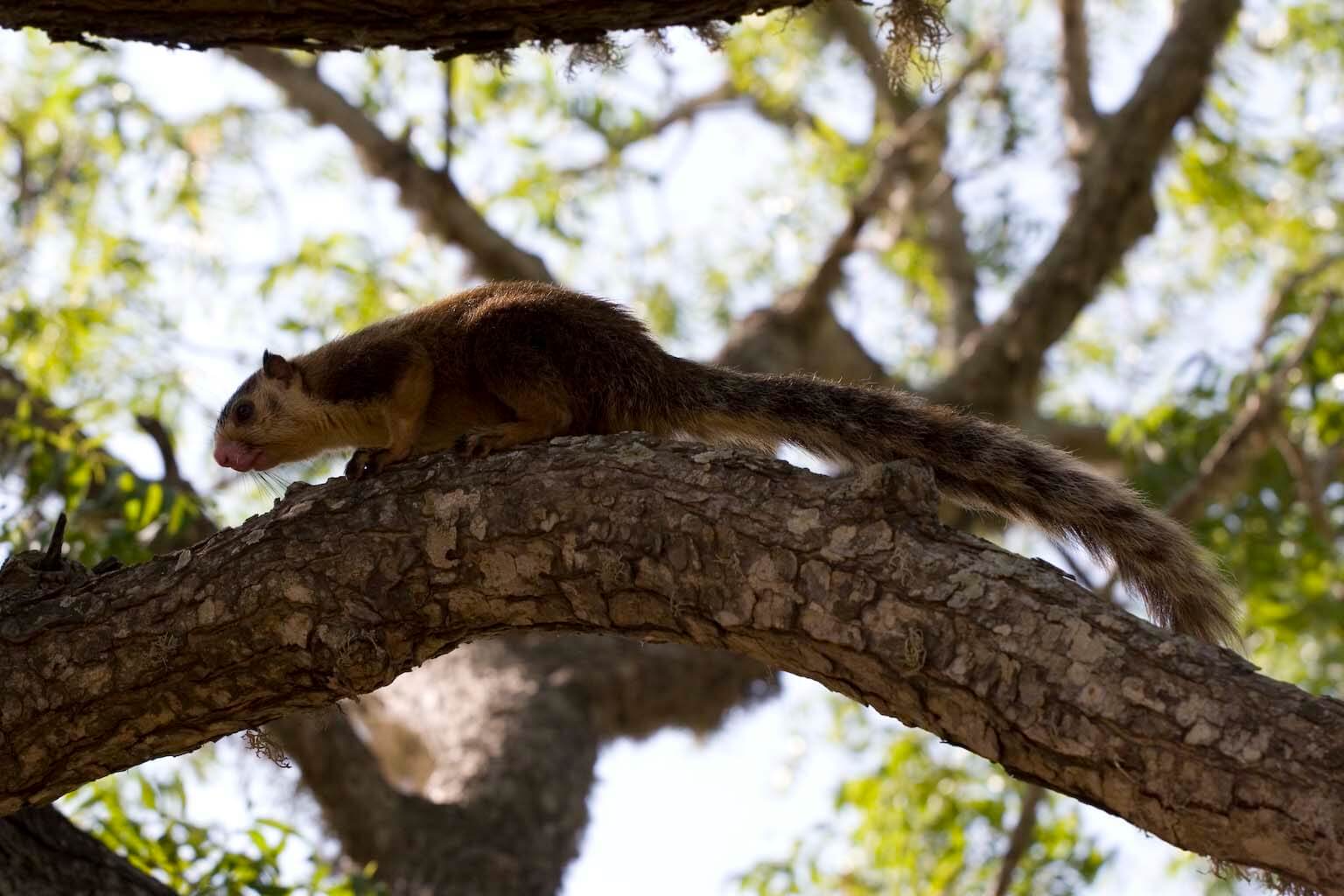
In the wild jungle, leopards, armadillos, giant squirrels, many monkeys and rare animals live their own unknown life. And the variety of birds amazes even ornithologists. Insects have their own amazing world. Here you can endlessly admire very large beautiful butterflies fluttering over fancy flowers. The whole air is permeated with the sound of cicadas, birdsong. According to scientists, the tropical Rainforest of Sinharaja is home to 2/3 of the species of all animals, insects and reptiles that exist on Earth.
Excursions
One of the simplest excursions involves driving to the park, walking for two to three hours with a guide, and driving back. However, during this time, it is difficult to see something worthy of attention. It is best to come here with an overnight stay and stay in a camp. At dawn, the journey begins on a long route-the ascent to the top of the mountain. Climbing it, you will get a complete picture of the park, see it in all its grandeur.
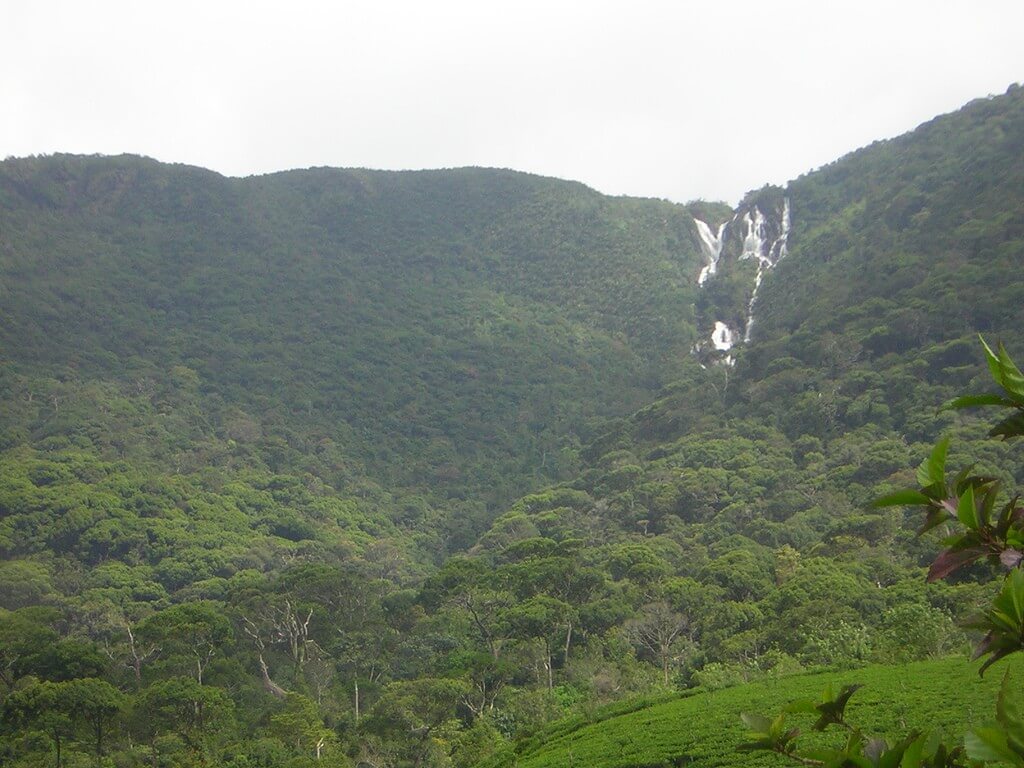
According to experienced travelers, a lot depends on the guide. Some will walk with you through the most interesting places, introduce you to the most interesting animals, waterfalls. Others will be too lazy to do this and will conduct the tour formally. Therefore, with guides, you need to be persistent so that they fulfill their direct duties.
Useful information
- You should not go for a walk in the forest on your own – it is very dangerous (wild animals, snakes) and you can get lost. Although independent travel is allowed, it is better to do it by car.
- The entrance fee to the park is Rs 866, including taxes.
- Guide services cost 2000-2500 rupees.
- The park’s opening hours are 6: 30-18: 00.
- Best time to visit: November-March. This time is considered the driest, but short-term showers are possible. They don’t last long (30 minutes maximum), but they can be so intense that they’ll drench you in one minute.
For more information about available forest activities and on-site accommodations, please visit <url> www.rainforest-ecolodge.com.
Udawalawe National Park
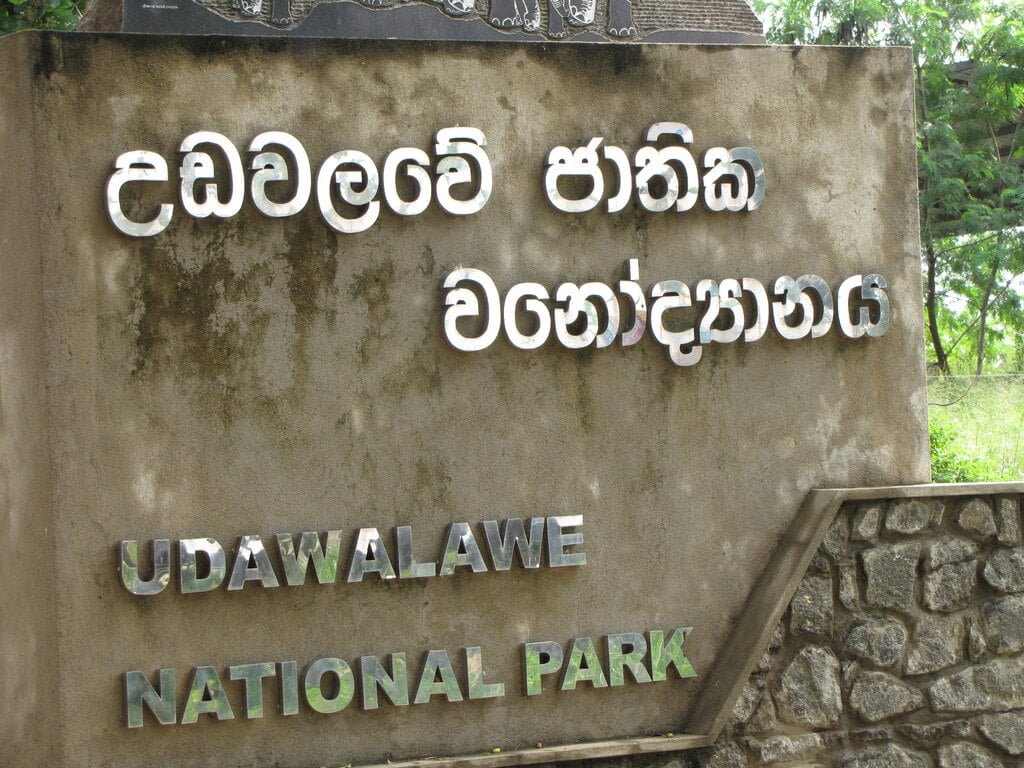
In the south, 170 km from the main city of the country, lies the Udawalawe National Park. Its proximity to the southern resorts of Sri Lanka puts it in third place in terms of the influx of visitors. The park was created with the aim of helping the jungle inhabitants find shelter when the grandiose construction of a reservoir began on the Valava River.
Udavalave occupies an area of more than 30 thousand hectares and is one of the largest parks on the island. There is a rich flora and fauna here: a huge variety of plants, among which there are especially rare specimens with medicinal properties. The animal world is represented by 39 species of mammals, 184-birds, 135-butterflies, many species of fish, reptiles and insects. The main attraction is the huge Uda Valave reservoir.

Travelers will find a lot of interesting and unusual things here, but most of all they are attracted by local animals that roam the savanna calmly, are not afraid of people at all and are not afraid of camera lenses. People come here to see the unique Sri Lankan elephants, whose population is decreasing.
Elephant Orphanage
To save elephants from extinction, the Wildlife Department has set up a special orphanage on the left side of the reservoir. All baby elephants that are left without a family are taken under protection, cared for and prepared for independent life. When the “kids” grow up, they are returned to their natural conditions.
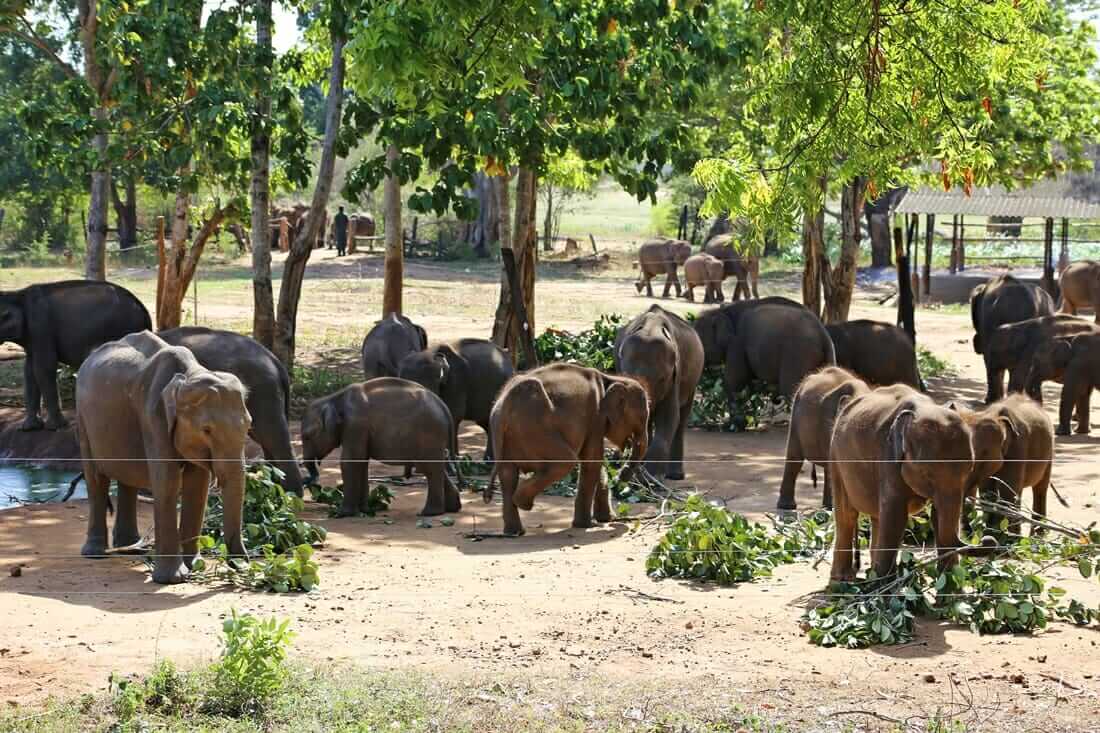
The main task of the orphanage is to increase the number of wild Sri Lankan elephants. Employees not only feed the baby elephants and monitor their health. Educational work for adults and children is regularly conducted, an Information Center is organized, and interesting events are held.

The baby elephants are fed four times a day every three hours, and guests can be present at this meal. But you can’t ride elephants in the kennel. All conditions are created here so that the contact of animals with humans is minimal, otherwise they will not survive in the wild.
In Sri Lanka, there is another, more famous Pinnawela orphanage.
Climate
This place is located where the wet and dry zones of the island border. The longest periods are March-May and October-January. The average temperature is about 29 degrees, and the humidity is about 80%.Opening hours and prices
- Udawalawe Park is open daily from 6: 00 to 18: 00.
- The cost of visiting for half a day is$ 15, for the whole day$ 25, with an overnight stay – $ 30 per person. The cost of children’s tickets is two times cheaper.
Jeep safari will cost about$100-120
The pretty mountain town of Ella is a couple of hours ‘ drive from the park. If you have the time, pay attention to it.
Minneria National Park
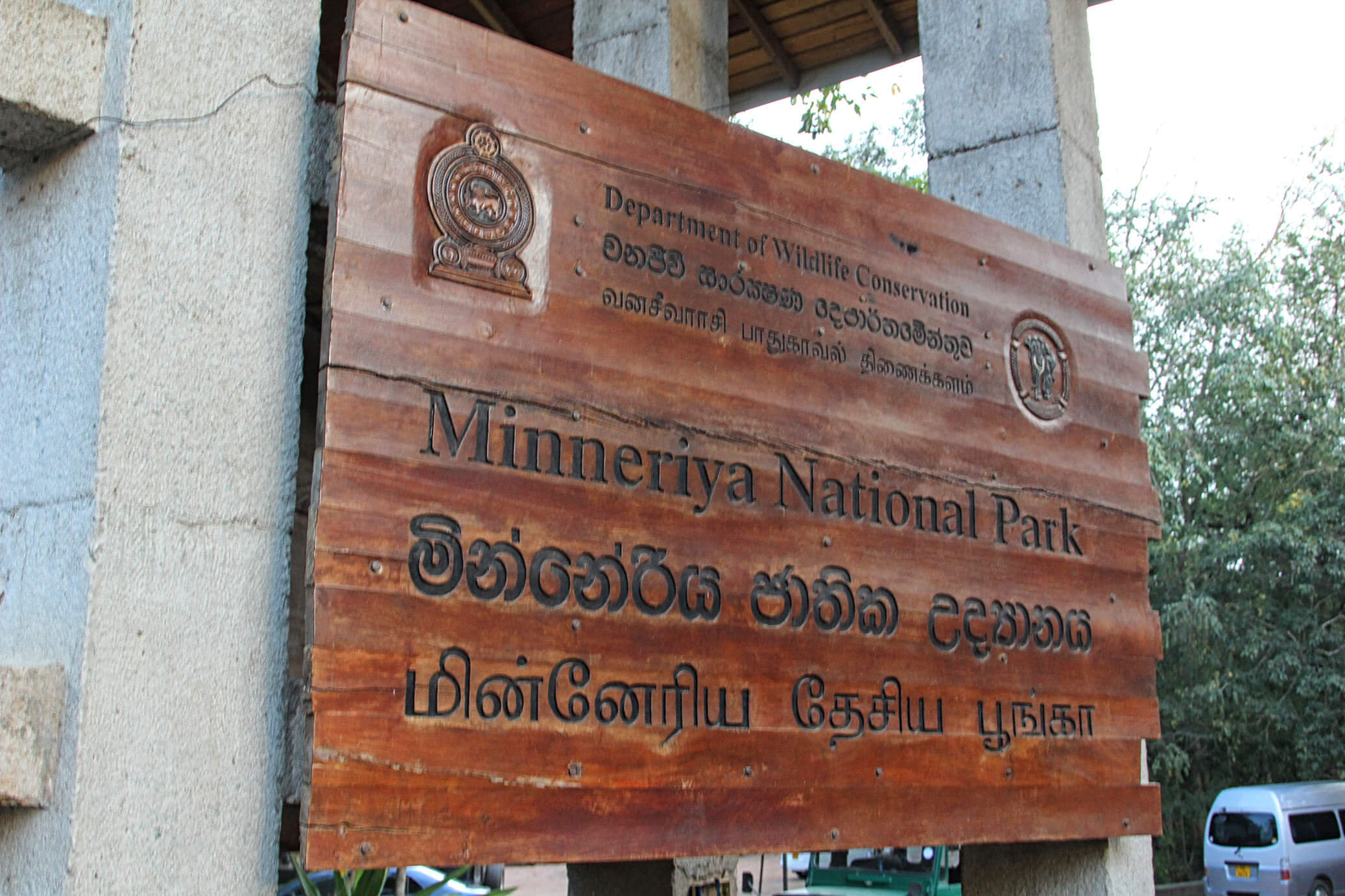
Minneriya Park is located 180 kilometers from Colombo. The central territory of the park is occupied by the reservoir of the same name, which feeds all the surrounding land. The abundance of fresh water was the source of the birth of a rich flora, which was chosen by numerous animals and birds. The Minneriya Reservoir was created by King Mahasen in the 3rd century and is now of international importance.
What is remarkable about the park
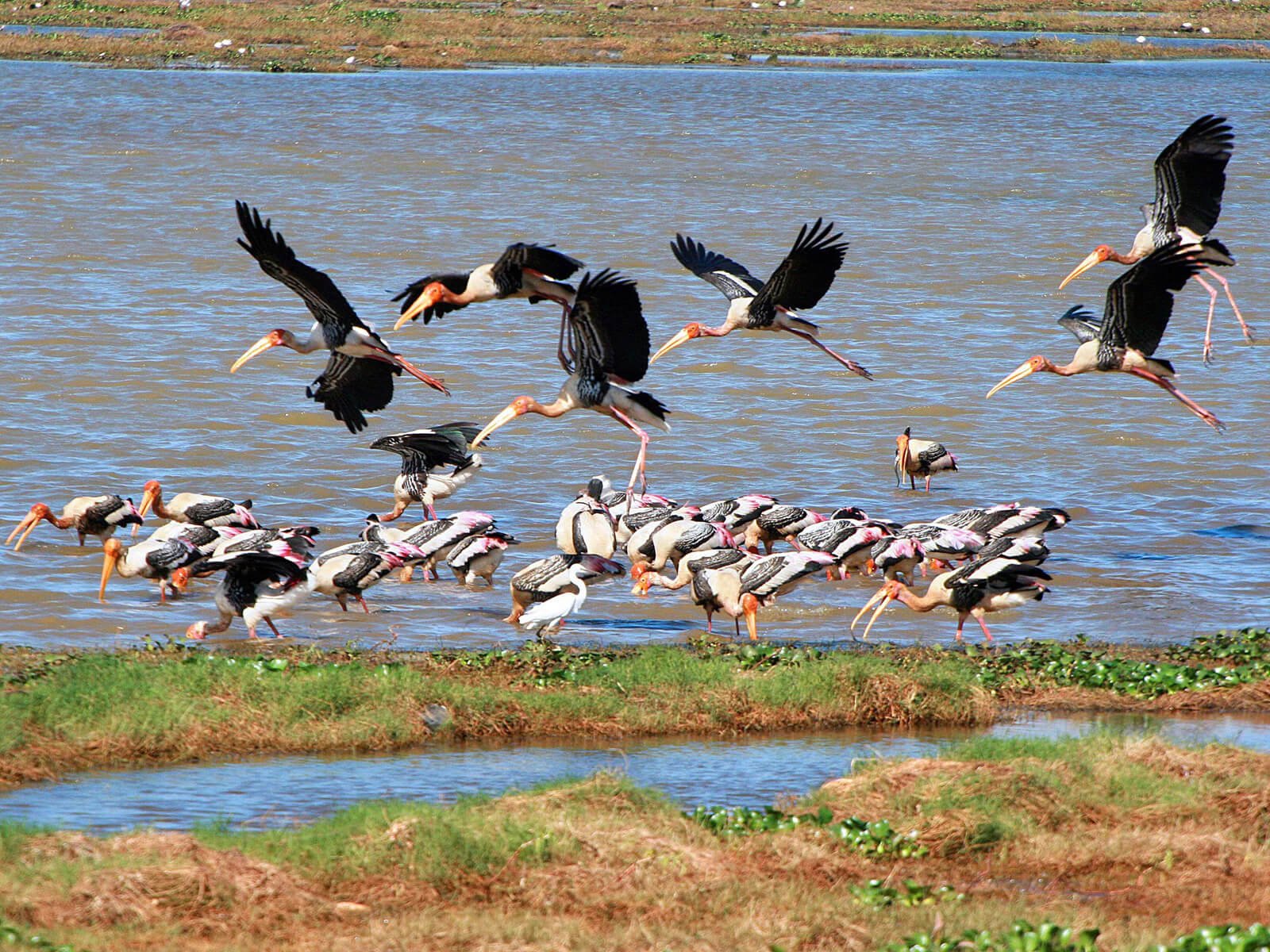
The park covers an area of about 9,000 hectares and consists of mixed evergreen forests. It is home to 25 species of mammals, most of which are elephants. There are more than 200 of them. There are also many leopards, bears, monkeys, wild buffaloes, sika deer, and Indian lizards in the reserve.
The pride of the park is made up of birds, which number over 170 species. Nowhere will you see so many parrots, peacocks, weavers, chatterboxes as in this amazing place. Flocks of pelicans, cranes, cormorants, storks, etc. have found their home in the reservoir. Naturally, there are a lot of fish and crocodiles here.
What you need to know before traveling

The ideal time for an excursion is considered to be early morning and late evening, when the sun is close to sunset. During the day, animals usually lie in the shade under trees, fleeing from the heat. Therefore, it is better to arrive at the park gate by 6 am.
- The best way to get around the park is by jeep. The cost of a safari varies between$ 100-200 (depending on the time of travel and route).
- The entrance fee is$25.
- Rent a Jeep for a half-day safari will cost 3500-4000 rupees, for the whole day 6000-7000 rupees.
Wherever you choose to travel around the country (Yala Park Sri Lanka, Sinharaja, Udawalawe or Minneriya), you will get the most unforgettable experience. No wonder seasoned tourists say that it was on this island that the Garden of Eden was located. You will not find such a beautiful, pristine nature anywhere else on Earth.

